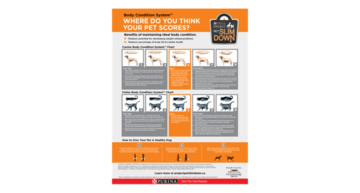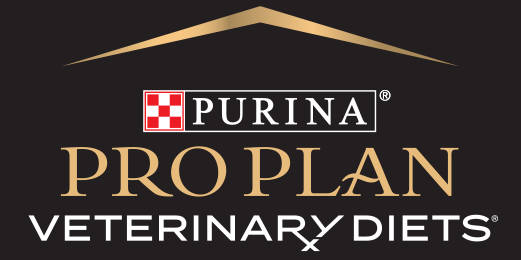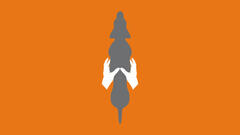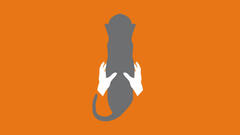Please note our website is undergoing an update and some of the information may be outdated. For the most current product information, please review the packaging on your bag of food. If you require information that is not on the packaging, reach out to Purina's Canadian Veterinary Resource Centre at 1-866-884-VETS (8387).
Is My Pet Healthy?

WHERE DO YOU THINK YOUR PET SCORES?
Obesity is a prevalent condition that can adversely affect your pet’s health. It has been estimated that 59% of cats and 54% of dogs are overweight.1
While gaining a few pounds may not make a difference to a human body, adding a few pounds to a dog or cat’s body can add a lot of stress to bones and organs—or even exacerbate medical conditions. Feeding your dog or cat to achieve and maintain an ideal body condition can help support a long and healthy life.
1 (2018) Association for Pet Obesity Prevention. Retrieved from https://petobesityprevention.org/
Four Slim Down Steps
STEP 1: FEED & TREAT RESPONSIBLY
- Follow your veterinarians recommendations
- Use your measuring cups for portions
- Do not exceed the daily amount. Don’t share your food. Play with your pet instead
- Treats should be <10% of your pets daily caloric intake. Don’t give into begging
STEP 2: STAY ACTIVE
- Set short-term measurable goals – i.e. Increase activity by 10 minutes/day
- Make your pet work – have them earn their treats by having them do tricks before rewarding with a treat
STEP 3: PARTNER WITH YOUR VETERINARY CLINIC
- Schedule regular weigh-ins
- Monitor your Body Condition System™ (BCS) measurements as per your Veterinarian, refer to your Pet Parent Data Information sheet & Diet History sheet to stay on track
STEP 4: BE CONSISTENT & STAY EDUCATED
- Overweight Management® products have a high protein to calorie ratio to promote fat loss and help maintain lean body mass. Visit proplanveterinarydiets.ca to keep informed of new product information
- Stick with the program to see results!

Benefits to achieving and maintaining an ideal body condition:
- Reduces potential for developing weight-related health problems
- Reduces percentage of body fat for better health
HOW TO GIVE YOUR PET A HEALTHY HUG™
1
Place both thumbs on your pet’s back bone and run your fingers along the rib cage. If you can’t easily feel the bony part of each rib, he or she may need to lose weight.
2
Stand directly over your pet as he or she is standing and look down. You should see a clearly-defined waist behind the ribs.
To learn more about how to give your pet a healthy hug and the body condition system™ chart, you can view or download the digital files
Healthy Hug Dog
Healthy Hug Cat


